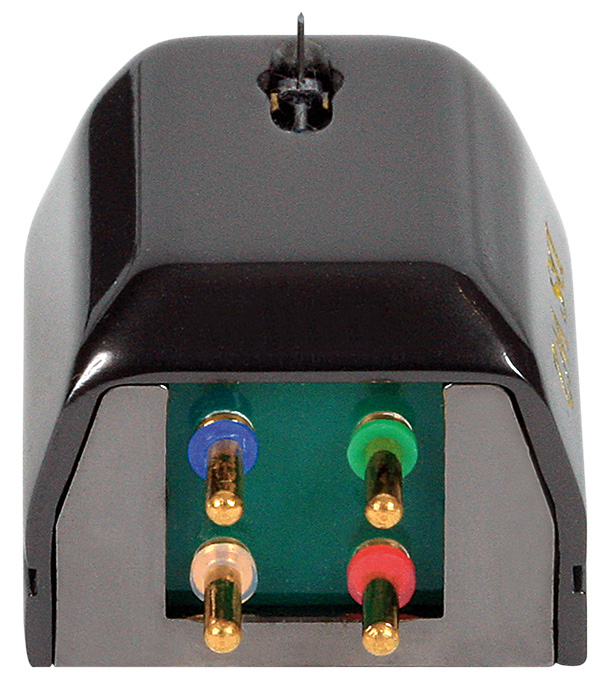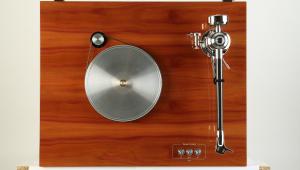DS Audio DS-W2 Cartridge

 Replacing the inaugural DS-W1 while benefiting from a host of trickle-down tech from the brand's flagship Master 1, the new DS-W2 'optical' pick-up is firmly in the limelight
Replacing the inaugural DS-W1 while benefiting from a host of trickle-down tech from the brand's flagship Master 1, the new DS-W2 'optical' pick-up is firmly in the limelight
When I first heard about DS Audio's optical cartridges, I wrote them off as 'dreamware' unlikely to end up chez Kessler. As it turns out, the audio gods smiled on me and I have, to my surprise and delight, managed to review just about all of them, watching the series evolve while using the Master 1 as my reference. Now, with the DS-W2 selling for £9995 with the equaliser/phono stage, the brand is delivering nearly all the performance of its flagship at half the price.
In under five years, DS Audio has revived the optical cartridge – mooted decades ago but only viable now, thanks to LEDs and other developments – and cornered the market for such devices. They are as alien to moving-coils and moving-magnets as are oddities like Londons (née Decca), Grados and others that choose a different path, but even those involve magnets and coils. However, optical cartridges, by definition, are free of this iron and copper.
Silent Background
I pondered with editor PM his discovery that 'the response of the cartridge is free of the multitude of small HF resonances that afflict all MM and MC types'. Furthermore, with a DS Audio pick-up in one turntable and any others in another turntable, with the gain turned up full, A/B switching reveals that even the finest combinations of phono stages and MM or MC cartridges exhibit hum. The DSes? Nada. Silence. And this means retention of the one hugely desirable element of CD playback that none can deny: the blackest of backgrounds.
Thus the DSes are a tonic for those who are addicted to digital's silence. What it means for vinyl lovers, therefore, is that one gets to hear LPs with a whole layer of low-level schmutz banished into the aether. Says PM, 'I dealt with this in my Opinion page [HFN Nov '15] but it could be the single most important factor in determining the "smoothness" and "blackness" of its sound'.
Optical History
Starting with the debut model, the DS-001, that was released for sale only in Japan, the second model, the DS-W1 [HFN Nov '15], was the first to be offered for worldwide distribution. This was followed by the flagship Master 1 [HFN Dec '17] and entry-level DS-002 [HFN Jun '17] variants. The DS-W2 reviewed here is a direct replacement for the DS-W1, which was certainly no slouch.

With the scarily-priced Master 1, the company incorporated an advanced optical-mechanical system which positions the micro-optic sensor closer to the stylus, extracting a more accurate and detailed level of information from an LP. This has found its way into the DS-W2, along with the Master 1's wire-suspended cantilever, designed to lower the compliance and therefore enhance the DS-W2's compatibility with a wider range of tonearms. This compares to the DS-W1 needing a low-mass arm.
My only complaint in practical terms involves the body height of the aluminium shell. So while the boron cantilever with 'Micro Ridge' stylus is clearly visible and the rear pins are colour-coded and well-spaced, the shallow profile of the DS-W2 causes problems with tapered arms and mildly-warped LPs. I'm devoted to the SME Series V, but its fatter back-end barely cleared 200g LPs with even the slightest of warps. I'd rather not stick a spacer between cartridge and headshell, so a plea to DS Audio: can you please make the next models you produce 1mm or 2mm taller?
All DS Audio cartridges have lozenge-shaped bodies, differing in colour. This one is blackish, with a rose quartz LED indicator to show that it's on and operating. As with all of DS Audio's designs, the DS-W2 will not function with a conventional phono stage, but instead requires a separate, dedicated box that contains the light's power supply, and bespoke phono stage/equaliser. It is important when contemplating the cost of any DS Audio cartridge to keep reminding oneself that the sticker price also covers the massive 'black box' needed to run an optical cartridge.
While the DS cartridges can use any of the company's power supplies, the one included with the DS-W2 sounds so close to the dearer unit that's provided with the Master 1 that it would take long sessions in the wee hours to hear the differences.
![]() Turning On The Lights
Turning On The Lights
It soon dawned on me, switching from the flagship Master 1 to the DS-W2 and using the Master 1's power supply, that DS Audio has made its life much harder by delivering so much at a lower price point. The basic character of both pick-ups is nearly identical, the performance as genetically similar as near-twins ought to be, and only audibly separated by their lower octaves.
Fearful as I am of appearing in Pseud's Corner, one analogy kept coming to mind, and I don't mean that hoary old example of Porsche 911 versus Cayman – a vivid case of the less-expensive sibling threatening its elder. Instead, it made me think of two Barbera wines from the same house, Braida: Bricco della Bigotta and Bricco dell'Uccellone. Even though the prices are not as widely spaced between them, both are among the finest wines to use those grapes, both are clearly from the same winery, but they behave like two siblings with just enough personality quirks to render them not mutually exclusive.


























































